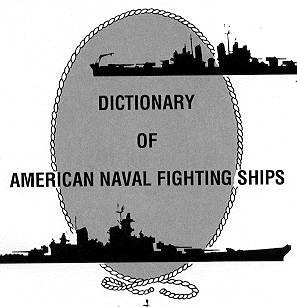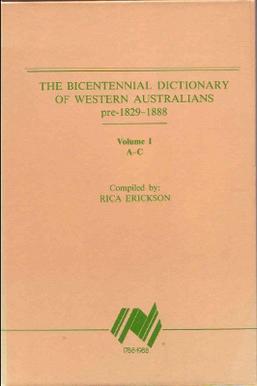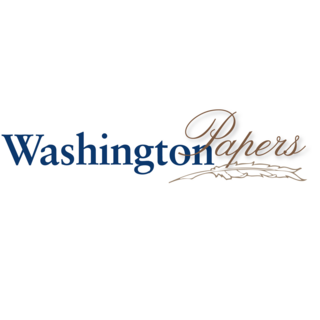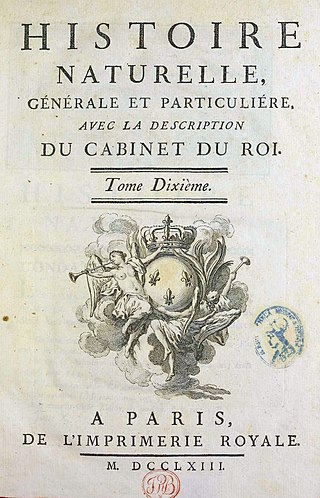Related Research Articles

The Dictionary of American Naval Fighting Ships (DANFS) is the official reference work for the basic facts about ships used by the United States Navy.
James Gairdner was a British historian. He specialised in 15th-century and early Tudor history, and among other tasks edited the Letters and Papers of the Reign of Henry VIII series.
A Dictionary of American English on Historical Principles (DAE) is a dictionary of terms appearing in English in the United States that was published in four volumes from 1938 to 1944 by the University of Chicago Press. Intended to pick up where the Oxford English Dictionary left off, it covers American English words and phrases in use from the first English settlements up to the start of the 20th century.

His Majesty's Armed Survey Vessel Lady Nelson was commissioned in 1799 to survey the coast of Australia. At the time large parts of the Australian coast were unmapped and Britain had claimed only part of the continent. The British Government were concerned that, in the event of settlers of another European power becoming established in Australia, any future conflict in Europe would lead to a widening of the conflict into the southern hemisphere to the detriment of the trade that Britain sought to develop. It was against this background that Lady Nelson was chosen to survey and establish sovereignty over strategic parts of the continent.
The Official Records of the Union and Confederate Armies in the War of the Rebellion, commonly known as the Official Records of the Union and Confederate Armies or Official Records, is the most extensive collection of American Civil War land warfare records available to the general public. It includes selected first-hand accounts, orders, reports, maps, diagrams, and correspondence drawn from official records of both Union and Confederate armies.
Bullarium is a term commonly applied to a collection of papal bulls and other analogous documents, whether the scope of the collection be general in character, or limited to the bulls connected to any particular order, or institution, or locality.

The Dictionary of Western Australians and the related Bicentennial Dictionary of Western Australians are two multi-volume biographical dictionaries containing details of European and non-European settlement in Western Australia from the foundation of the Swan River Colony in 1829 until 1888.

The Chronicles and Memorials of Great Britain and Ireland during the Middle Ages, widely known as the Rolls Series, is a major collection of British and Irish historical materials and primary sources published as 99 works in 253 volumes between 1858 and 1911. Almost all the great medieval English chronicles were included: most existing editions, published by scholars of the 17th and 18th centuries, were considered to be unsatisfactory. The scope was also extended to include legendary, folklore and hagiographical materials, and archival records and legal tracts. The series was government-funded, and takes its unofficial name from the fact that its volumes were published "by the authority of Her Majesty's Treasury, under the direction of the Master of the Rolls", who was the official custodian of the records of the Court of Chancery and other courts, and nominal head of the Public Record Office.

The Royal Commission on Historical Manuscripts, was a United Kingdom Royal Commission established in 1869 to survey and report on privately owned and privately held archival records of general historical interest. Its brief was "to make inquiry as to the places in which such Manuscripts and Papers were deposited", and to report on their contents. It remained in existence until 2003, when it merged with the Public Record Office to form The National Archives. Although it technically survives as a legal entity, its work is now entirely subsumed into that of The National Archives.
Papal regesta are the copies, generally entered in special registry volumes, of the papal letters and official documents that are kept in the papal archives. The name is also used to indicate subsequent publications containing such documents, in chronological order, with summaries of their essential contents, for which English diplomatics usually use the term "calendar".
The Pennsylvania Archives are a 138 volume set of reference books compiling transcriptions of letters and early records relating to the colony and state of Pennsylvania. The volumes were published in nine different series between 1838 and 1935 by acts of the Pennsylvania legislature. Contents of the archives include:
The Close Rolls are an administrative record created in medieval England, Wales, Ireland and the Channel Islands by the royal chancery, in order to preserve a central record of all letters close issued by the chancery in the name of the Crown.
The Lisle Papers are the correspondence received in Calais between 1533 and 1540 by Arthur Plantagenet, 1st Viscount Lisle (c.1480-1542), Lord Deputy of Calais, an illegitimate son of King Edward IV and an uncle of King Henry VIII, and by his wife, Honor Plantagenet, Viscountess Lisle, from several servants, courtiers, royal officials, friends, children and other relatives. They are an important source of information on domestic life in the Tudor age and of life at the court of Henry VIII.

The WashingtonPapers, also known as The Papers of George Washington, is a project dedicated to the publication of comprehensive letterpress and digital editions of George and Martha Washington’s papers. Founded at the University of Virginia in 1968 as the Papers of George Washington, the Washington Papers is an expansive project that includes the papers and documents of George Washington as well as of individuals close to him. The Washington Papers aims to place Washington in a larger context and to bring individuals, such as Martha Washington and Washington family members, into sharper focus. The project is currently headed by editor in chief and director Jennifer E. Steenshorne, and is the largest collection of its type. The project is funded in part by the National Endowment for the Humanities, the National Historical Publications and Records Commission, the Packard Humanities Institute, the Mount Vernon Ladies' Association, the University of Virginia, the Florence Gould Foundation, and other private donors.
Letters and Papers of the Reign of Henry VIII is a multi-volume edition of documents from the reign of Henry VIII of England. The series was edited by J. S. Brewer, James Gairdner and R. H. Brodie, and originally published between 1862 and 1932. It remains a key resource for historians of the period, and is now freely available online as part of British History Online.
The Papers of James Madison project was established in 1956 to collect and publish in a comprehensive letterpress edition the correspondence and other writings of James Madison, the fourth president of the United States.

The Histoire Naturelle, générale et particulière, avec la description du Cabinet du Roi is an encyclopaedic collection of 36 large (quarto) volumes written between 1749–1804, initially by the Comte de Buffon, and continued in eight more volumes after his death by his colleagues, led by Bernard Germain de Lacépède. The books cover what was known of the "natural sciences" at the time, including what would now be called material science, physics, chemistry and technology as well as the natural history of animals.

HMS Fly (1813) was a Royal Navy Cruizer-class brig-sloop built by Jabez Bailey at Ipswich. She was ordered 23 April 1812, launched on 16 February 1813 and commissioned May 1813.
The Australian Joint Copying Project (AJCP) was a National Library of Australia and State Library of New South Wales led initiative to microfilm archives and records from the United Kingdom and Ireland relating to Australia and the Pacific.
The Historical Records of New South Wales (HRNSW) is a series of books published by the NSW Government Printer between 1892-1901 compiling information from official sources on the history of NSW and Australia. The HRNSW comprises 7 volumes from the period of Captain Cook 1762-1780 to the Governorship of William Bligh and part way through the Governorship of Lachlan Macquarie 1809-1811. The volumes are also available online.